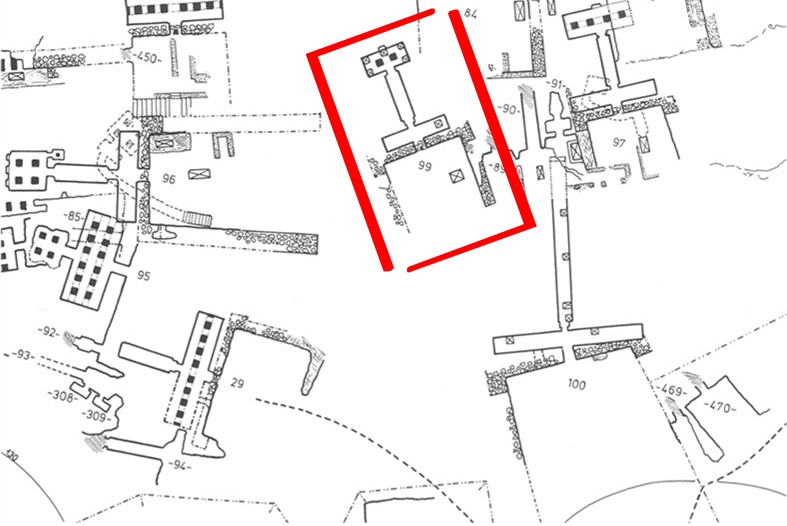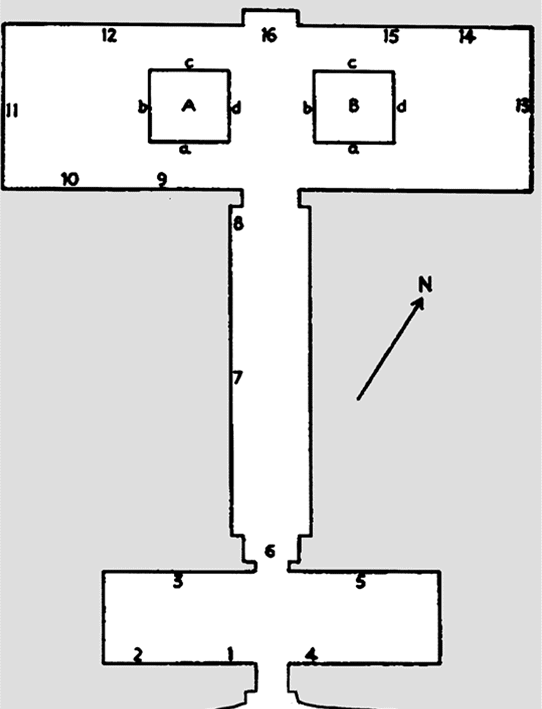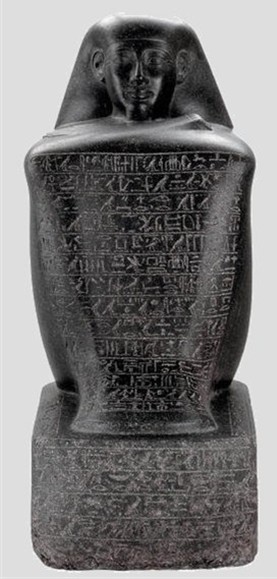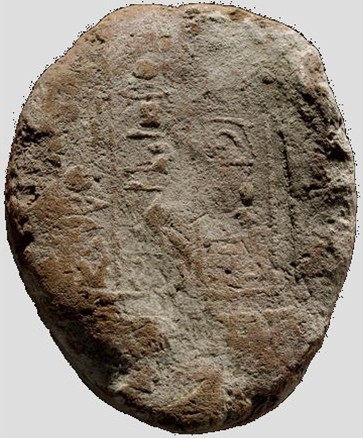 |
Senneferi |
last update:
26.03.2008
|
Historical Data
| Name |
Title |
|
Origin |
Tomb |
Senneferi
in TT99 repeatedly also written as: Sennefer
|
Overseer of sealbearers, Overseer of the gold land
of Amun |
|
unknown |
TT99 |
| Wife: Tajmau or Tiamu |
|
|
|
|
| Parents |
|
|
|
|
| Father: Hay-Djehutj |
sab (zAb)
(Honorable, Senior);
Overseer of the bureau of Watet-Hor |
mentioned in TT99; mentioned on the statue BM EA48
of Senneferi |
|
|
| Mother: Sat-Djehutj |
|
|
|
|
| Children: none are named in TT99 although children are
mentioned generally on pillar A; a son be shown there carrying out
some rituals |
|
|
|
|
| Daughter: Ren(e)na |
|
testified together with her husband Amenhotep in their lost
tomb C.3 |
|
C.3* |
| |
|
|
|
|
|
* see also: Porter&Moss, I-1, S. 457) |

|
TT99 is located in the hill of Sheikh Abd el-Qurna above the tomb of Rekhmire, TT100,
north of the tomb of Sennefer, TT96, and south of the tomb of Amenemhat,
TT97 (see also the part of a map above taken from: F. Kampp, Die thebanische
Nekropole. 1996, plan III ). The location of the tomb is shown by the red
frame. |

|
Ground plan of TT99 without the courtyard (according to Porter&Moss) |
| Between 1992 and 2002 Nigel und Helen Strudwick investigated TT99,
They have published their results in several journals, etc. Therefore, only a
brief description is given here. For a detailed
description of the tomb, its structure, history and finds, please use the website
of Strudwick about TT99.
|
|
The tomb consists of an open forecourt from which a
centrally entrance leads in a simple windowless transversal hall. Even today a
small niche for a statue can be detected above the doorway of the slightly sloped
facade. The facade itself still shows remains of the original plaster. |
|
A passage leads from the 1st transversal hall to a 2nd transversal hall or
chapel with two
pillars and a central niche in the western wall. Most likely, a statue of Senneferi was mounted inside the niche. |
|
Besides two earlier known shafts in the courtyard the investigations of
Strudwick revealed additional shafts. Totally, 5 shafts were found in the 2nd
transversal hall, one shaft in the 1st transversal hall, and 3 in the courtyard. |
| Senneferi was buried in the deepest shaft found in the
courtyard. Possibly, a 2nd shaft in the courtyard was prepared for the burial of
some relatives. |
|
All other shafts were built during later re-use of the tomb. Re-use of the tomb
started in the 21th dynasty and was continued possibly until the late period
(ca. 600 BC). Thereafter, the tomb was used in the coptic and islamic period
probably as a
living space or store-room. |
|
Senneferi is known from a number of places. Beside his tomb TT99 his is
mentioned twice at Serabit el-Khadim.
|
|
Serabit el-Khadim is a locality in the south-west of the Sinai where probably
already in pre-dynastic times copper and turquoise was mined extensively. On the
hill of Serabit el-Khadim there is a temple dedicated to the goddess Hathor,
"Lady of the Turquoise". Senneferi was depicted in this temple
standing directly behind
Thutmosis III adoring Hathor (Urk IV, 548; the scene is destroyed now).
In addition, he is depicted on a stela which also shows the name of
Thutmosis III.
|
|
According to preserved documents ( Piehl, K., "Inscriptions hiéroglyphiques I.",
Stockholm-Leipzig 1886) Senneferi was also mentioned in the now lost tomb (C.3)
of his son-in-law, Amenhotep.
|
|
Two completely preserved statues (British Museum, EA48, siehe unten; Cairo
Museum, CG 1013) as well as the fragments of two other statues (Cairo Museum,
CG 1112; Wien, Kunsthistorisches Museum ÄS 5978) show his name.
|
|
Finally, Senneferi is the owner of a chapel (No. 13)
at Gebel es-Silsilah.
|
None of these monuments can be dated to the reign of a king and, therefore,
would of any help for dating Senneferi.
Only in a papyrus (Louvre E2336; quoted
from Helck, GM 43, 1981) which records year 32 of Thutmosis III Senneferi is
mentioned so that at least he can be dated to that year of the reign of that
king.
|
|
Occasionally, chapel No. 13 at Gebel es-Silsilah is used for dating
Senneferi. The 2nd register of the limb shows the throne name of Thutmosis III, Men-kheper-Ra,
however, the cartouches had been obviously changed. The original name is still
recognizable in the left cartouche and reads - Maat-ka-Ra
(Hatshepsut). This might be interpreted as the earliest attestation of Senneferi.
|
|
This interpretation is strictly rejected by Helck (GM 43, 1981). During the
reign of Hatshepsut two "Overseer of the sealbearers (jmj-rA sDAwt)"
are attested one after the other: Nehesj (leader of the journey to Punt; owner
of chapel No. 14 at Gebel
es-Silsilah) and Ty or Tai (&Aj) who is
attested by an inscription on the Sinai until year 25 of Thutmosis III.
Therefore, Senneferi and Tai must have been "Overseer of the sealbearers" at the
same time.
|
|
According to Helck it is nowhere attested that two officials carried out the
duties of an "Overseer of the sealbearers" concurrently. Therefore, he assumes
that Senneferi did not built chapel 13 but took over an abandoned chapel during
the autocracy of Thutmosis III. Furthermore, Helck points out to the fact
that chapel No. 13 is the only one in which the name of Hatshepsut was not only
erased but also replaced by that of Thutmosis III - in all other chapels which
were built during the reign of Hatshepsut, her name was only erased. The
replacement of the name of Hatshepsut by name of Thutmosis III is therefore an
unique event in comparison to the other 8 chapels.
|
|
Based on the considerations of Helck Senneferi should be counted as a
contemporary of Thutmosis III, a dating into the reign of Hatscepsut on account
of the changes done in chapel 13 at Gebel es-Silsilah appears untenable. |
 |
Block statue of Senneferi, British Museum, London, EA 48; height: ca. 90 cm |
| As an important official Senneferi obviously had
access to considerable resources. So he could employ skilled craftsmen to carve
a beautiful block statue - one of the best examples preserved. In this type of
block statues no personal details other than the face and hands have
been sculpted. |
Therefore, the large blank surfaces of the block
statue offers maximum space for inscriptions. The test can be seperated into two different
parts:
The main part is an elaborate prayer for
funerary offerings for Senneferi. Finally, this part records the names of his father and mother.
In the 2nd part, Senneferi is requesting that he may be
well provided for the afterlife.
|
|
Several different funerary
cones are known from the tomb of Senneferi. As is usual with these objects, none
of his cones were found in their original location. The photo below shows an
example which is today on show in the British Museum. This one is broken off
just above the stamped surface.
|

|
Funerary cone of Senneferi, BM, EA 62873
|
|



